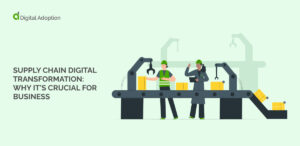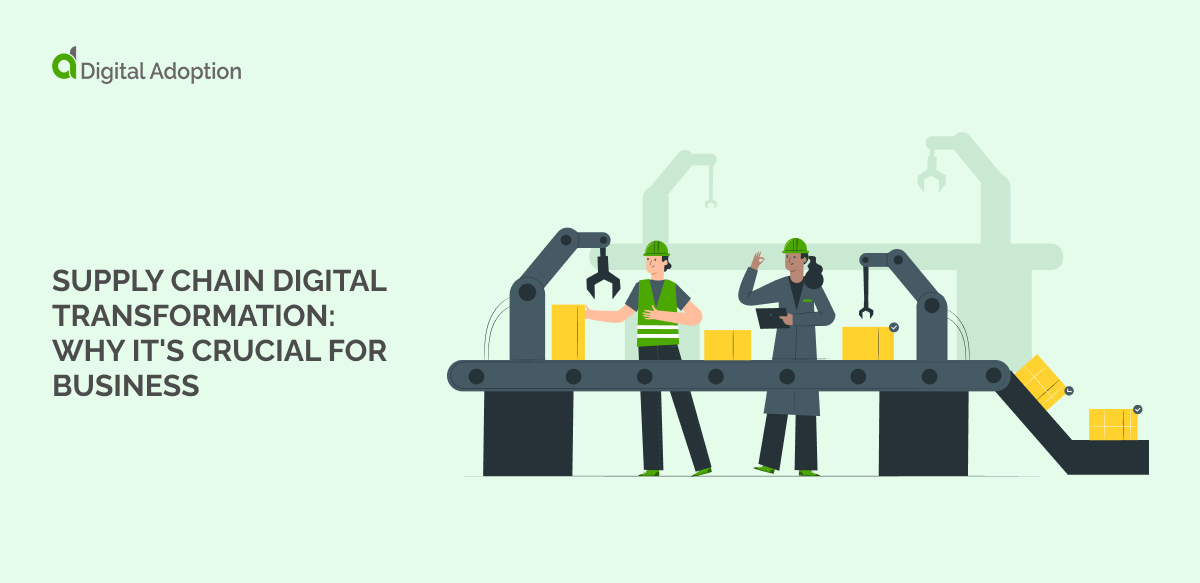A company often requires changes to advance in today’s market. Specifically, when it picks up new projects or initiatives to improve performance, seize opportunities or address key issues. The company may impose changes on processes, job roles, organizational structures, and types and uses of technology.
It is actually the employees who are impacted the most and have to eventually change how they perform the jobs on a daily basis. If these people are unsuccessful in their self-changes, the new process will fail. However, if the employees adopt and welcome the changes by the initiative, then the expected results are delivered.
- What is Change Management?
- What Is The Importance Of Change Management?
- What are the Benefits?
- Giving Assessment and Motivation
- Utilizing the Alignment of Existing Resources
- Maintaining Daily Operations
- Caring for Employee Concerns
- Dropping Risk and Inefficiency
- Enhancing the Morale
- Expectancy of Challenges
- Lowering the Costs
- Amplifying the ROI
- Developing More Opportunities
- Principles of Change Management
What is Change Management?
PROSCI compares change management as a system that leads people how to prepare, equip, and support other individuals when adopting a change. The implementation of new processes is also meant to lead the company success and outcomes.
Even though each organizational change is unique, as are the individuals experiencing it, decades of research shows that there are actions that can be taken to influence people during their individual transitions. In other words, change management gives an organized manner to assist each individual in the organization as they transition from their modern status to the aspired future one.
What Is The Importance Of Change Management?
There are many ways change can occur in the organization, including strategic, leadership, or technological changes. 
In the recent years, great companies have witnessed that change management performs an important role during the implementation of new technology. However, people fear that as technology develops it will take over the workplace leaving little room for the employees. Therefore, resistance to change in firms looking to produce the latest technology is expected to develop.
To solve the issues presented above, organizations can use change management as the formal way of communicating with employees. The approach is used to help employees better understand and cope with change. Change management creates a workplace environment that is more open-minded to transitions, and it can ease the tension and create a smooth process.
The change management approach outlines why change is happening, what it will appear like for the company during the process, and how it will ultimately benefit them in the end. It keeps employees informed from the start, smoothing the transition and shortening the time spent on the change.
It’s been confirmed that if employees are exposed to change they will be more involved in the operation of making it happen. When employees are involved in the transition it will likely take place quickly and ultimately save the organization time and resources.
Having a strategy in place helps the company to lessen, if not eliminate, the fear of change. Moreover, by establishing a pattern for development early on together with preserving consistency, it attends to build a more flexible and innovative workplace.
What are the Benefits?
There are many good reasons to take the time to develop an organizational change management plan. Take a look at the following benefits:
Giving Assessment and Motivation
With a strategic change management plan, the organization maintains a vision of how the process of change will look. Moreover, it reveals what milestones are needed to achieve the end goal.
 This allows those in charge of the transition to assess the success of the project during each critical stage. It provides an opportunity to motivate individuals and teams to help achieve the desired goals with recognition for those who succeed.
This allows those in charge of the transition to assess the success of the project during each critical stage. It provides an opportunity to motivate individuals and teams to help achieve the desired goals with recognition for those who succeed.
Utilizing the Alignment of Existing Resources
Just because companies change their knowledge management strategy and systems does not mean that they have to replace every existing resource. The key is to integrate the current resources with the future vision. Through this process, organizations can make the most of what they have, and utilize that knowledge for investment purposes.
With an effective change management plan, the existing resources can be aligned with the new tools and strategies being implemented.
Maintaining Daily Operations
Even though some tributes are needed to reach the future status, companies have to implement change without hurting the current processes.
An effective change management plan predicts what individuals and teams need in order to continue doing their jobs during the switch. Moreover, they maintain the day-to-day operations without noticeable negative effects.
Caring for Employee Concerns
Addressing the concerns of employees leads to overall more efficiency within an organization. Developing a change management plan allows the company to address the concerns of their employees, keeping the line of communication open with all individuals and teams involved in the transition.
Dropping Risk and Inefficiency
Taking the time to create an organizational change management plan ensure that companies will save time in addition to reducing common risks. By building a strategy that takes all the individuals and teams involved in the transition into their attention, there is less of a chance of an unsuccessful attempt to change. Moreover, it reduces the amount of time it demands to complete the transformation.
Enhancing the Morale
When employees see that their company leaders took the time to develop a change management plan which considers their concerns, they are drawn to increase performance and become more involved in the transition. Hence, leaders must make sure that the staff feels supported throughout the entire process, and that they have the information they need to succeed.
Expectancy of Challenges
The method clearly has the possibility of barriers that stop the organization from reaching its goals.

When a company has an effective change
management system it is best to provide a response to challenges that may arise during and after the transition.
Lowering the Costs
By promoting a change management strategy ahead of time, the company might decrease the cost of the transition. It also gives them a greater management of their resources. With the right bodies involved, it reduces incompetence, waste, and avoid costly projects that do not add to the goals.
Amplifying the ROI
An excellent organizational change management plan does not only cut costs, it can also increase the company’s return on investment.
When an organization has the right conceptual staffing for their people and processes, they are more likely to see positive returns on the investments.
Developing More Opportunities
An organizational change management plan enables businesses to increase overall development during the transition. This approach establishes a set of best practices to maintain growth and innovation in the future.
Principles of Change Management
There is not a single methodology that is considered a good fit for every company. However, there is a set of practices, tools, and techniques that can be adapted for a variety of situations.
Below is the outline of conducting principles for change management. Using this list as a systematic and comprehensive framework can help executives fully understand what to expect during the change.
The principles provide an outline to help leaders understand a way to manage personal change. In addition, it gives them techniques that use to involve the entire organization in the process.
1. Deal With the Human Side Thoroughly
fAll significant change creates issues among people. New leaders will be asked to step up, jobs have to change and new skills need to develop, but if the employees don’t step up they have the potential to turn into an uncertain and resistant pack. Dispensing with these matters on a reactive, morale, and results at risk.
This is the reason why a conventional method to managing change is the answer. By starting with the team and only then engaging the key stakeholders and leaders, an early and successful development is made possible. Moreover, the development moves effortlessly through the organization later on.
In fact, this approach needs a lot of data collection, data analysis, redesigning of strategy, planning, and implementation as possible. The approach should also integrate program design and decision making.
These efforts are both focused on informing and enabling important management. The techniques must on a practical estimation of the organization’s readiness, the capacity to change, and history.
2. start From the Top
Due to the fact that change can cause organization-wide concern for people at all levels, all eyes will turn to the CEO and the leadership team for strength, support, and direction. Consequently, the directors themselves must adopt the new programs first, both to challenge and to motivate the rest of the organization. They must express with one voice and model the desired behaviors.
Although the company must be seen as united by the public, the executive team needs to understand that it is composed of different individuals who are going through stressful times and need support. They should remember that executive teams that work well together are best positioned for success, as they are aligned and committed to the direction of change.
With this in mind, executives will have the ability to further understand the culture and behaviors of the individuals within their company in order to introduce a change model to their unique needs.
A senior team, at one large transportation company, try out an initiative to improve the efficiency. They also want to enhance the performance of its corporate and field staff.
The team finds that in order to implement a new system, it must start before addressing issues at the officer level. The process includes a workforce that delivers results only after the leadership team had completed the process of aligning and committing to the change.
3. Involve Every Scale and Skin
Transformation programs affect the different levels of the organization as they progress from defining strategy and setting targets for design and implementation. Change efforts must include plans for identifying leaders throughout the company. Furthermore, the responsibility for design and implementation is distributed to each member of the group, meaning the changes will cascade through the organization.
At each scale of the company, the leaders who are identified and trained must align with the company’s vision. They must be equipped to execute their specific mission and be motivated to make the change happen.
It is important to note that when a major multi-line insurer with consistently flat earnings decided to change performance and behavior in preparation for going public, the company followed the cascading leadership methodology. The company utilized the methodology as they trained and supported teams at each stage. For example, they started with ten officers, setting the strategy, vision, and targets with them. Next, more than 60 senior executives and managers designed the core of the change initiative.
Following the design of the change initiative, the organization proceeded with the 500 leaders from the field. The structure remained in place throughout the change program, which doubled the company’s earnings far ahead of schedule.
This procedure is also an excellent way for an organization to distinguish its next generation of leadership.
4. Create a Formal Case
Individuals are inherently rational and will question the extent in which change is needed. They can ask whether the company is headed in the right direction, or whether they want to commit personally to making the change happen. The bottom line is that they turn to their leaders for answers. 
The articulation of a formal case for change and the creation of a written vision statement are invaluable opportunities to make the leadership-team alignment. Remember that there are three steps to follow when developing the case.
First, confront reality and articulate a convincing need for change. Second, demonstrate faith that the company has a viable future and the leadership to reach their goals. Finally, provide a roadmap to guide behavior and decision making.
Directors must customize the message for various internal readers. They must explain the continuing change in terms of what matters to the people.
For example, a consumer packaged-goods company experienced years of constantly declining earnings. They determined that they needed to significantly restructure their operations. This included instituting, among other things, a 30 percent workforce reduction to remain competitive.
In a group of meetings, the executive team that built a fiercely business issues that damaging the structure is the only way to keep the business alive. These leaders also take on the organization heritage to craft a compelling insight to lead the company forward.
By confronting reality and helping employees understand the necessity for change, directors need to motivate the organization to follow the new direction.
5. Build Ownership
Leaders of large change programs must outplay during the transformation. They also need to create a critical mass among the workforce in favor of a change.
 However, this requires more than a mere buy-in or passive agreement that the direction of change is acceptable. It demands ownership by leaders who are willing to accept responsibility in making the change happen in all of the areas they influence or control.
However, this requires more than a mere buy-in or passive agreement that the direction of change is acceptable. It demands ownership by leaders who are willing to accept responsibility in making the change happen in all of the areas they influence or control.
The method is best to build ownership by involving other people when identifying problems and crafting solutions. It is reinforced by incentives and rewards.
Remember, this topic is a bit sensitive. This might start with financial compensation or psychological camaraderie. For example, at a huge health organization that is moving towards a shared-services model for administrative support, the first department that creates a detailed design is the human resources.
Moreover, the personnel worked with advisors in cross teams in a six months time. However, as designs were being finalized, the top departmental executives began to oppose the move to implementation.
Despite the agreement, the executives realized that they did not spend enough time in the design process to feel the ownership to begin the process.
On the support of the feedback, the method modified to have a deep dive. The departmental leaders worked with the design teams which makes them understand deeper and further exposure to changes that soon occur. Hence, it is the turning point that makes the transition happened faster.
It also produced a panel of top executives to work as a team. This builds a sense of alignment and unity that the group has never felt before.
6. Always Communicate
Most of the time, change leaders make the mistake of believing that others understand the issues. They assume that others feel the need to change and see the new direction as clearly as they do.
Furthermore, an excellent strategy needs to strengthen the core messages in a regular and timely advice that is both motivate and practical. Remeber, communication best work if it works from the top to the bottom and vice versa.
In addition, change programs built to provide employees with the right information at the right time and to solicit their input and feedback. This often requires communication through multiple and redundant channels.
Let us take a look back at the late 1990’s. The commissioner of the Internal Revenue Service, Charles O. Rossotti, had a vision claiming that the IRS could treat taxpayers as customers and turn a feared bureaucracy into a world-class service organization.

To change the mindset of more than thousands of employees, make them think, and act creatively, it needs more than just systems redesign and process change. In fact, it requires an IRS leadership that outlined and administered with an ambitious communications program.
In addition, time, constant, and practical communication is the heart of the plan. It changes the customer ratings from extremely low survey results to the best rank it could get. These example companies are Starbucks and famous airlines.
8. Assess the Real Landscape
Successful change programs pick up speed and intensity as they cascade down the chain of command. This makes it critically important that leaders understand and account for organizational culture and behaviors at each level of the association.c
Organizations often make the error of assessing culture either too delayed or sometimes not at all.
A methodical cultural diagnostics system can assess organizational readiness to change, bring major problems to the surface, and identify conflicts. It can also define factors that recognize and influence sources of leadership and resistance.
9. Address the Culture Openly
Once the culture is understood, leaders must address it as effectively as any other field in the change program. Moreover, leaders must open about the culture and underlying behaviors that best support the new way of doing sales and chances to the new model and reward those behaviors.
Moreover, developing a baseline, defining an explicit end-state or desired culture, and devising detailed plans to make the transition is required.
Business culture is a long shared history, explicit benefits, expectations, common attitudes, reactions. Change plans involve creating a society in new companies or those built through multiple properties, combining education, and bolstering cultures.
Everyone must understand that all companies have a cultural center. It is the locus of understanding, action, character, a personal identification that is often an efficient way to jump-start culture development.
A consumer-based company claimed that the truths of market demand are the best focus when it comes to profitability and accountability. In addition, changing the numbers and motivations produce a plan to orderly change the company’s culture.
The company also brought the marketing staff into the process early to create enthusiasts for the new philosophy. They adapted marketing campaigns, spending plans, and incentive programs in order to be more accountable. Watching these culture leaders jump on the bandwagon, the rest of the company quickly fell in line in support for the new program.
10. Prepare for the Unforeseen
There is no change program that goes completely according to plan. People often react in unexpected ways to new initiatives.

Some of the reactions anticipated, and quickly fall away as the external environment shifts. To efficiently manage change requires a constant reassessment of its impact and the organization’s willingness. It also needs the capacity to embrace the next wave of transformation.
Change leaders fed real data from the field which supported by information and solid decision-making processes. It also makes the adjustments necessary to maintain momentum and drive results.
For example, a leading U.S. company was facing aggressive financial pressure from its inability to respond to diversity in the marketplace. An analysis revealed deficiencies in its organizational structure and governance.the company decided to implement a new operating model.
In the midst of a detailed design, a new CEO and leadership team took over. The new team was initially skeptical.
However, they proved that a solid case for change existed as it supported by the organization at a large force. With this thought process, some adjustments made to the speed and sequence of implementation.
11. Speak to the People
Change is both an institutional and personal journey as people often spend hours each week at work.
Many individuals think of their colleagues as a second family. Hence, individuals and teams need to know how their work will change, what are the expectancy of them during and after the change program, how they measure, and what success or failure will mean for them and those around them.

Team leaders should approach their teams as honestly and explicitly as possible. People react to what they see and hear around them, which also involved in the change process.
An extremely visible reward such as recognition, bonuses, and promotion produce dramatic support for embracing change. A penalty or removal of people standing in the way of change reinforces the institution’s devotion.













